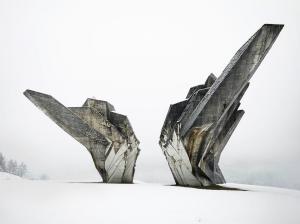Toward a Concrete Utopia: Architecture in Yugoslavia, 1948-1980

The architecture that emerged during this period—from International Style skyscrapers to Brutalist "social condensers"—is a manifestation of the radical pluralism, hybridity, and idealism that characterized the Yugoslav state itself. Exploring themes of large-scale urbanization, technological experimentation and its application in everyday life, consumerism, monuments and memorialization, and the global reach of Yugoslav architecture, Toward a Concrete Utopia will feature work by important architects, including Bogdan Bogdanović, Juraj Neidhardt, Svetlana Kana Radević, Edvard Ravnikar, Vjenceslav Richter, and Milica Šterić. From the sculptural interior of the White Mosque in rural Bosnia, to the post-earthquake reconstruction of the city of Skopje based on Kenzo Tange's Metabolist design, to the new town of New Belgrade with its...
- Log in to post comments
